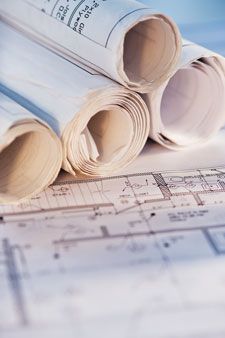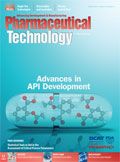Flexibility vs. Right-Sizing: Determining the Right Facility Size
Choosing the right facility size requires tailoring the design for current needs as well as anticipating the future.
Daniel Grill/Getty Images

Right-sizing implies operational effectiveness and efficiency. Since the 1980s, the phrase has been used in management circles as a euphemism for layoffs, but in facility design, right-sizing can be a euphemism for minimal cost. Flexibility, on the other hand, is about having the capacity to adapt to future changes quickly and easily. Flexibility, however, typically requires an investment in infrastructure. At their most extreme, these two ideas are at opposite ends of a facility-design continuum.
Anticipating the future
The idea of “right-sizing,” when applied to design, is to create an optimal facility. An example is found in the best practice recommendation of designing for actual equipment loads instead of the traditional method of estimated loads (1). Without the data of real loads, the practice of estimating results in oversized systems that increase energy and operational cost. But at what point is the glove’s fit tailored too tight? Experience has established that--in the pharmaceutical industry--change is inevitable, making flexibility a necessary facility consideration. When building a facility, it is wise to build in some accommodation for future modifications. Anticipating the future can be daunting, but experience proves that it is prudent to try.
To effectively tailor a design for current needs, while at the same time planning for future potential, the different types of change that may occur must be considered. The most obvious potential change is increasing the manufacturing capacity to meet demand for the current drug portfolio. This change will require more and/or larger equipment of the same type as already exists. Another consideration is how new products will be introduced to the facility. Over the long haul, the ability of a facility to adapt to changing market and business conditions ensures its value far into the future. Inevitably, this ability will require more than just adding similar equipment, and new and different technologies will need to be accommodated.
Making space
In all cases, at a minimum, drug manufacturing facility owners need to allow for additional space. Planning for more space can be as simple as laying out a facility so that the manufacturing area has a direction in which to expand, such as into a warehouse or to the exterior into a future building addition. Key to effective growth, however, is having a strategy for internal circulation, with a sound way for materials and personnel to access the future area. Because continuity is harder to achieve if it has not been planned, a good place to start is ensuring that the current manufacturing circulation (i.e., the flow of materials and personnel) can be extended directly into the future area. While the exact use of the future space may be unknown, the need to get personnel and materials in and out in a way that is operationally effective and compliant is certain.
Over time, the drive for greater manufacturing efficiencies and capabilities leads to new equipment. All equipment has a limited useful lifespan. In addition, drug reformulation can demand additional or modified equipment, and new products and their processes may be added to an existing portfolio. A facility design should allow for the removal of existing equipment and the installation of new models. Dimensional clearances and movement pathways need to be integrated into the design. Without such a mindful approach, equipment may become inaccessible, and changes may require major interruption of ongoing operations.
Planning for utilities and services
Planning for additional space and new equipment is relatively easy to implement. A greater challenge, with greater cost burden, is planning for future utilities and services. Again, smart strategies need to be applied. Near-term flexibility can be provided by a thoughtful approach to system distribution. For example, service mains can be installed and sized so that local distribution can be easily added in the future. If judiciously done, this oversizing of a system can, for little upfront cost, provide for relatively easy and efficient growth in the future. In some situations, however, extending the current system may not be the right approach. If not, a strategy for future utilities still needs to be developed. One strategy is to plan a pathway and space for new mains and distribution to be installed later. Another strategy is to make a decision to develop a separate system in the future. In any case, it is better to build in a strategy at the beginning than to be without options later.
The greatest cost potential is in the generation of overall utility capacity, which is typically a longer-term consideration related to an expanded manufacturing footprint. Using modular equipment that can provide phased growth is a strategy that has found much success. Admittedly, this will not work for all systems, but it can work for many. Such an approach enables spending only what is required and delaying future capital expenditures until they are actually needed. Another option is purchasing extra capacity up-front by way of oversized equipment, thus anticipating the future need for increased capacity. You can ignore this possibility by rationalizing, “if we are that successful, we’ll deal with it then,” or you can develop a strategy that affords flexibility and a relatively quick and easy response when needed.
Conclusion
Right-sizing is more than responding to the immediate, foreseeable requirements of a facility. To optimize a design, there needs to be a prudent investigation of the potential for growth. With right-sizing, as the phrase implies, one size does not fit all. An approach needs to be crafted appropriate for the situation and the potentials that exist for a facility. Right-sizing is about finding value, the sweet spot where design, management, and operational considerations are balanced and deliver a quality facility for an appropriate cost. Finding the “right size,” involves the creation of an efficient design with an appropriate amount of flexibility.
Reference
1. US Environmental Protection Agency, Laboratories for the 21st Century Best Practice Guide: Right-sizing Laboratory Equipment Loads (Washington, DC, Aug., 2005).
About the Author
Eric Bohn is partner at JacobsWyper Architects, 1232 Chancellor St., Philadelphia, PA 19107, tel: 215.985.0400, www.jacobswyper.com.
Article DetailsPharmaceutical Technology
Vol. 40, No. 3
Pages: 60–61
Citation:
When referring to this article, please cite it as E. Bohn, "Flexibility vs. Right-Sizing: Determining the Right Facility Size," Pharmaceutical Technology 40 (3) 2016.

Drug Solutions Podcast: A Closer Look at mRNA in Oncology and Vaccines
April 30th 2024In this episode fo the Drug Solutions Podcast, etherna’s vice-president of Technology and Innovation, Stefaan De Koker, discusses the merits and challenges of using mRNA as the foundation for therapeutics in oncology as well as for vaccines.